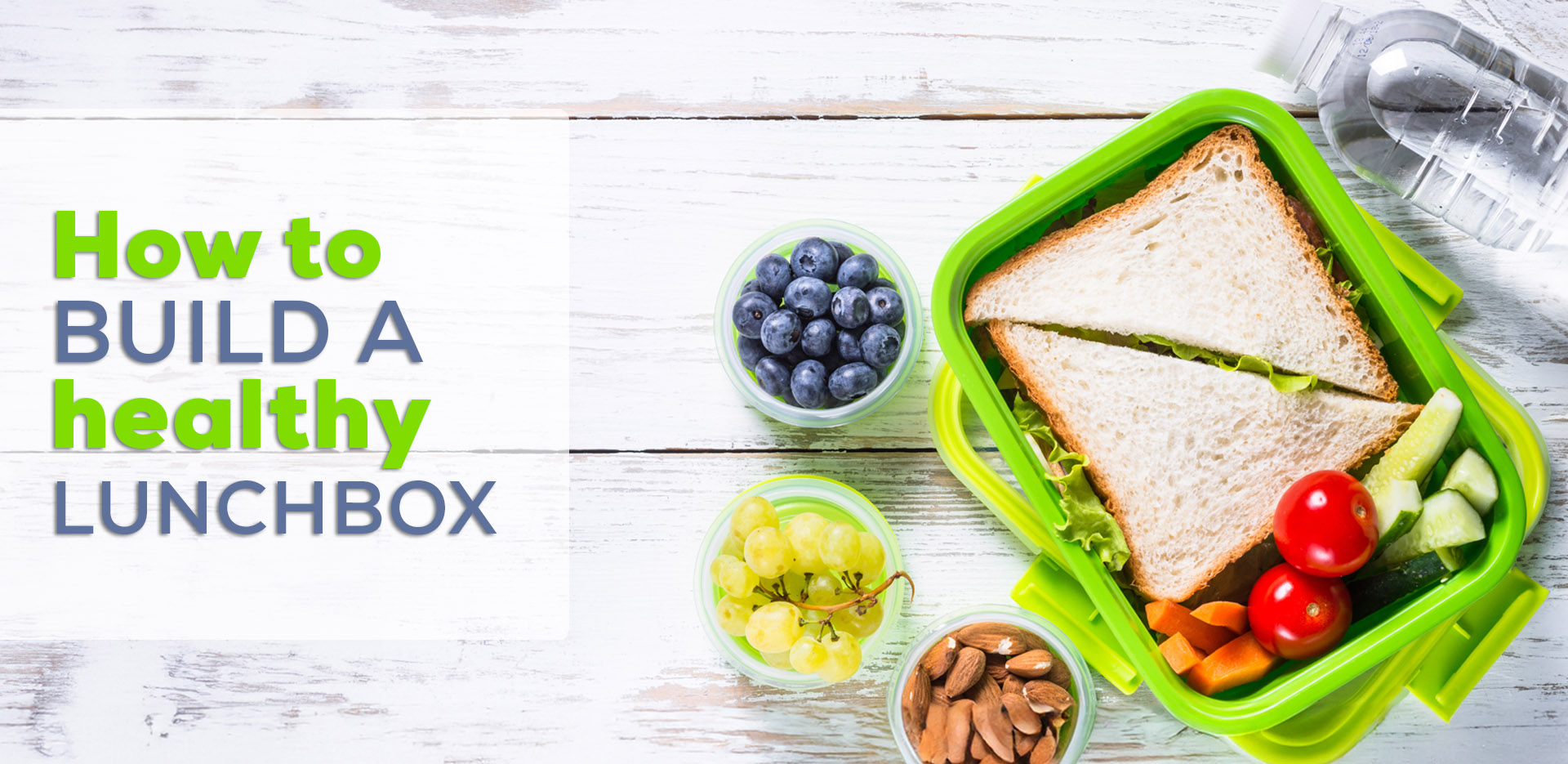
Healthy Lunchbox Week is an initiative of Nutrition Australia that aims to inspire Aussie families to create healthy, nutritious, and enjoyable lunchboxes and runs from the 4-10th of February. On average children consume around 30% of their daily food intake at school which predominantly comes from their lunchbox. Fuelling children with healthy and nutritious food throughout the school day helps boost concentration, focus, and cognitive function and leads to better academic performance and classroom behaviour. Healthy lunch boxes also play an important role in developing healthy lifelong eating habits. In this month’s blog ORS’s resident dietitian Nicole Saliba breaks down the key ingredients to include in a healthy lunch box.
Choose a whole-grain main
Wholegrains are a rich source of carbohydrates, which is the body and brain’s preferred fuel source. Aim to include low GI sources of carbohydrates which provide a slow, steady release of energy. Avoid low-fibre, high-processed grains like white bread, bread rolls and wraps, instant noodles, and plain rice crackers and opt for:
-
- >> Wholemeal/grain wrap, roll, or bread
-
- >> Corn tortillas
-
- >> Good quality grainy crackers such as vita-weats or ryvitas
-
- >> Quinoa
-
- >> Pasta
-
- >> Brown or basmati rice
Add some fruit
Fruit provides fluid and fibre, which help to keep us full and maintain a healthy weight. Less than 50% of Aussie kids are meeting the two recommended servings of fruit per day. Avoid or limit fruit juice, dried fruit, and fruit in syrup and opt for fresh fruit such as:
-
- >> Whole fresh fruit e.g. apple or banana
-
- >> Chopped watermelon, rockmelon or pineapple
-
- >> Fresh fruit salad
-
- >> Fruit skewers
-
- >> Two fruits in natural juice
-
- >> Punnet of berries
-
- >> Handful of grapes
-
- >> Bananas or berries added to some home-made muffins or pancakes
Boost with some protein
Including meat and/or meat alternatives such as legumes helps provide protein to support growth and development as well as other nutrients such as iron and zinc which support the immune system and brain function. Foods such as milk, cheese, and yoghurt provide protein but also calcium to support healthy bones and teeth. Good sources of protein include:
-
- >> Hommus
-
- >> Yoghurt- dairy-based or soy. Coconut and oat yoghurts have virtually no protein
-
- >> Cheese e.g. on a sandwich or with crackers
-
- >> Legumes e.g. canned chickpeas or 4-bean mix in a salad
-
- >> Roasted fava beans or chickpeas
-
- >> Boiled eggs
-
- >> Small tin baked beans or 4 bean mix
-
- >> Leftover cooked chicken or meat
-
- >> Quiche, egg muffins or frittata
-
- >> Falafels or veggie fritters
-
- >> Tofu e.g. in a wrap or rice paper roll
-
- >> Milk
Squeeze in some veg
Vegetables are a great source of dietary fibre which helps us feel our ‘good’ gut bugs which in turn keep our immune systems nice and strong and support our mental health. They’re also rich in vitamins and minerals. Less than 10% of Aussie kids are meeting the recommended 5 servings of vegetables per day. Try and aim for 2-3 different coloured veggies in the lunchbox
-
- >> Baby cucumbers
-
- >> Cherry tomatoes
-
- >> Carrot/celery/capsicum sticks
-
- >> Salad added to wraps or sandwiches
-
- >> Roasted vegetables added to wraps or sandwiches
-
- >> Avocado or veggie-based dips e.g. hommus
-
- >> Small tub of defrosted peas or edamame beans
-
- >> Snow peas/sugar snap peas
-
- >> Olives or pickles
-
- >> Cold cob of cooked corn or a small can of corn kernels
-
- >> Small can of 4 bean mix
Add a bottle of water
Children shouldn’t be consuming soft drinks or energy drinks at all. Limit juice and flavoured milk, and sports drinks like Gatorade should be used only in the context of kids playing a sport or being physically active. Water should always be the drink of choice.
To pull all the elements together and get some inspo check out the Cancer Council’s healthy lunchbox website which has a great range of infographics showcasing a range of different lunchboxes here: Healthy Lunchbox Examples
A few other helpful tips
1. Plan what you’re going to prepare for school lunches the weekend prior and shop accordingly. Short on time? Do an online shop at Coles or Woolworths and pick it up (for free!)
2. Choose fruits and vegetables in season to save money
3. If time permits make your own snacks e.g. make a batch of banana muffins and freeze them
4. Get a good quality lunch box that keeps food cold all day
5. If you have a child that likes a warm l
6. On hot days freeze a water or ice brick to add to the lunchbox
7. Get kids involved- they’re more likely to eat their lunchbox if you’ve included them in the process!
If you would like learn more about creating healthy meals to fuel your day book in with one of our dietitians today by calling ORS on 1800 000 677 or our Eastsense by ORS clinic on 02 4311 3623.

Nicole Saliba – Clinic Manager
Dietitian, BHlthSc(Nutr&Diet), APD
